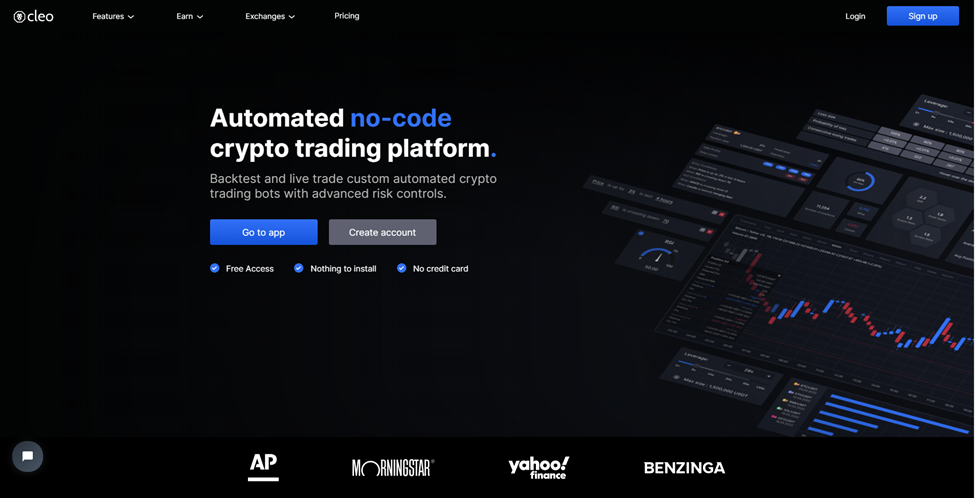Good Facts For Deciding On Automated Systems
Wiki Article
Why Not Test Your Strategy On Multiple Timeframes?
The process of backtesting a strategy for trading across various time frames is vital to test its credibility. Since different timeframes can provide different perspectives on market trends and price movements, it is important to backtest the strategy across a variety of time frames. Backtesting a strategy in multiple timeframes helps traders understand its performance in various market conditions. They can also determine if it is stable and reliable across different time periods. For instance, a method that performs well on a daily basis might not be as effective on a more extended time frame like the monthly or weekly. By backtesting the strategy using weekly and daily timeframes, traders can identify any inconsistencies that could be present in the strategy and make adjustments as needed. Another benefit of backtesting on multiple timeframes is that it can assist traders in determining the most suitable time horizon to implement their strategy. Backtesting with multiple timeframes allows traders determine the most suitable time horizon. Different trading styles and trading frequencies may be preferred by traders. Backtesting provides traders with an in-depth view of the effectiveness of the strategy. This will allow traders to make more informed decisions about its credibility and its consistency. View the most popular algorithmic trading software for more info including automated software trading, how does trading bots work, psychology of trading, best crypto indicators, position sizing trading, position sizing, are crypto trading bots profitable, trading platform, stop loss meaning, best automated crypto trading bot and more.

Why Backtest Multiple Timeframes To Speed Up Computation?
It's not faster to backtest multiple timeframes, but it's as simple to test only one timeframe. It is crucial to backtest multiple timeframes to ensure the reliability of the plan. It can also help make sure that the strategy performs consistently under various market conditions. Backtesting with multiple timeframes means testing the same strategy on different timeframes like daily or weekly, and analyzing the results. This gives traders a more accurate view of the performance of the strategy. In addition, it allows you to identify any weaknesses or inconsistencies. Backtesting on multiple timeframes can add complexity or the time required. If backtesting on multiple timeframes, traders need to evaluate the potential benefits versus the added time and computational requirements. However, backtesting multiple timeframes is an effective method to test the effectiveness and reliability of a plan across market conditions and time periods. In deciding whether to test multiple timeframes, traders should take into consideration the trade-off between the potential advantages and the additional time and computational requirements. View the top best trading platform for website advice including backtesting platform, crypto backtesting platform, crypto bot for beginners, position sizing, forex backtesting, crypto futures trading, automated trading platform, automated trading software free, crypto bot for beginners, crypto daily trading strategy and more.

What Backtest Considerations Exist Regarding Strategy Type, Elements, And The Number Of Trades
You need to be aware of the following essential aspects when testing strategies including the strategy's type and its elements; and the trade volume. These aspects can have an impact on the outcome of backtesting and must be taken into consideration when evaluating the strategy's performance. Strategy Type- Different trading strategies such as mean-reversion or trend-following have different market assumptions and behavior. It is important that you be aware of the type and the kind of strategy that is being backtested.
Strategy Elements - A strategy's elements can have a significant influence on the results of backtesting. This includes the entry and exit rules and position sizing. It is important to take into consideration the entire set of elements in evaluating the performance of the strategy, and to make any necessary adjustments to ensure that the strategy is robust and solid.
Amount of Trades. The backtesting process may have a significant effect on the outcomes. Although a greater number of trades will provide the most complete picture of the strategy’s performance, it can also increase the computational workload of backtesting. A lesser number could facilitate faster backtesting, but will not provide a full analysis of the strategy's performance.
To get accurate and reliable results, traders must consider the strategy type and elements when backtesting trading strategies. These aspects will allow traders assess the effectiveness of the strategy and make an informed decision about its credibility and stability. Take a look at the best automated forex trading for more tips including forex backtesting software free, crypto bot for beginners, backtesting in forex, cryptocurrency trading bot, trading platform, algorithmic trading strategies, crypto trading backtesting, best crypto trading platform, best forex trading platform, automated trading bot and more.

What Are The Passing Criteria For Equity Curve, Performance, And Number Of Trades?
To determine the success of a trading strategy by backtesting, traders need to consider a variety of parameters. The criteria can include the equity curve as well as performance indicators. The amount of trades can also be used to determine whether the strategy is working or not. Equity Curve - The equity curve illustrates how a trading account has grown over time. It is a way to assess the overall performance and trend of a strategy's trading strategies. This is a requirement strategies must meet if it exhibits steady growth over a period of time and has minimal drawdowns.
Performance Metrics- Alongside the equity curve, traders should be able to consider other performance metrics when evaluating the effectiveness of a trading strategy. The most commonly used metrics are profit factor, Sharpe, maximum drawdown and the average duration of trade. If the performance metrics for the strategy are within acceptable ranges , and demonstrate consistent and reliable performance over the backtesting period, it may pass the test.
The number of trades- The number of trades that are executed in the backtesting process could also be an important consideration in evaluating the effectiveness of the strategy. This test is satisfied if a strategy produces enough trades over the backtesting time. This will give a more detailed view of the strategy's effectiveness. The success of a strategy isn't always determined by its number of trades. Other aspects, like the quality of the strategy, should be taken into consideration.
The equity curve, performance metrics, trades, and number of trades are the most important factors in evaluating a trading strategy's performance through backtesting. These will help traders make informed decisions regarding whether the strategy is solid and solid. These metrics will allow traders to evaluate their strategies' effectiveness and make any changes necessary to boost their results.